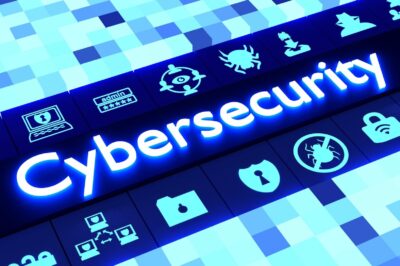Demystifying Cybersecurity: Understanding the Complexities and Challenges
In today’s interconnected digital world, cybersecurity is a topic of paramount importance. While it may seem daunting and complex, this article aims to demystify the world of cybersecurity. By breaking down the complexities and challenges, we will shed light on the core concepts that help us navigate this vital aspect of the modern age.
The ABCs of Cybersecurity
Before diving into the complexities, it’s crucial to have a solid grasp of the basics. Cybersecurity, in essence, is the practice of protecting computer systems, networks, and data from theft, damage, or unauthorized access. It encompasses a broad spectrum of tools, techniques, and best practices aimed at ensuring the confidentiality, integrity, and availability of digital assets.
Why is Cybersecurity Vital?
Cybersecurity is essential because, in a digital world, nearly everything is connected. From personal information and financial data to critical infrastructure, all of it is at risk. Without proper cybersecurity measures, these assets are vulnerable to cyber threats such as hacking, malware, phishing, and more.
The Myth of Complexity
Cybersecurity is often perceived as complex and bewildering. Many individuals and businesses shy away from addressing cybersecurity issues due to this perceived complexity. However, a deeper understanding can simplify the subject significantly.
Active vs. Reactive Approach
One aspect that adds to the mystique of cybersecurity is the perception that it is an exclusively reactive field. In reality, proactive measures play a substantial role. Instead of waiting for an incident to occur, proactive cybersecurity involves implementing measures to prevent or mitigate threats before they happen.
Education and Awareness
Another common misconception is that cybersecurity is reserved for experts with in-depth technical knowledge. While experts are crucial, education and awareness of basic security principles are within reach for everyone. Understanding what phishing emails look like, creating strong passwords, and regularly updating software are simple yet highly effective steps.
Cybersecurity Tools
Many user-friendly tools are available. These tools simplify tasks like antivirus scans, firewall management, and vulnerability assessments. Users don’t need an advanced technical background to employ these tools effectively.
Facing the Challenges
While simplifying the concept of cybersecurity is important, it’s equally important to acknowledge the challenges that make it a complex field.
Ever-Evolving Threat Landscape
One of the biggest challenges in cybersecurity is the ever-evolving threat landscape. Cybercriminals are constantly developing new tactics, making it necessary for experts to stay one step ahead.
Complexity of Systems
Modern technology systems are incredibly complex. With various devices, operating systems, and applications in use, maintaining consistent security across all of them is a substantial challenge.
Balancing Security and Usability
Striking the right balance between security and usability can be tricky. Overly strict security measures can hinder productivity and frustrate users, while lax security can lead to vulnerabilities.
FAQ: Your Cybersecurity Questions Answered
Q1: Is cybersecurity only essential for big businesses?
No, it is crucial for everyone, from individuals to small businesses to large corporations. Cyber threats do not discriminate based on the size of the target.
Q2: What’s the most common cybersecurity threat?
Phishing attacks are among the most common threats. They involve deceiving individuals into revealing sensitive information, such as login credentials or personal data.
Q3: Can I handle cybersecurity for my small business without a dedicated expert?
Yes, by educating yourself and implementing basic security measures, you can significantly enhance your business’s security. However, for more complex issues, consulting a professional is advisable.
Q4: What should I do if I’ve been a victim of a cyberattack?
If you suspect a cyberattack, disconnect from the internet, change your passwords, and scan your systems for malware. Report the incident to the appropriate authorities and consider seeking professional help.
Q5: Is cybersecurity a one-time investment, or does it require ongoing efforts?
Cybersecurity is an ongoing process. Regular updates, employee training, and monitoring are essential to keep up with evolving threats.
The Road to a Secure Digital World
In conclusion, demystifying cybersecurity reveals that it is not as daunting as it may seem at first glance. While the challenges are real, so are the tools, knowledge, and resources available to address them. This is vital for protecting our digital lives and assets, and by taking a proactive approach, anyone can contribute to a more secure digital world. Understanding the complexities, educating oneself, and being prepared to adapt to the ever-changing landscape are key steps toward a safer online environment.
With this knowledge, it’s clear that it is not hard, but rather an essential aspect of our interconnected world that we can all engage with responsibly. By demystifying it, we take a significant step toward ensuring a secure and vibrant digital future.
So, whether you’re an individual, a small business owner, or part of a larger organization, the key to a safer online environment is understanding that cybersecurity, while not without its complexities, is a challenge that can be met with knowledge, vigilance, and the right tools.
By doing so, you not only protect your digital assets but also contribute to the collective effort to create a more secure, resilient, and connected world.
So, are you ready to embrace the world of cybersecurity with confidence?
